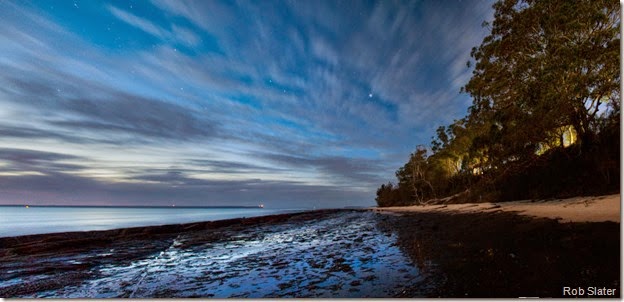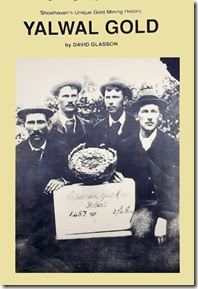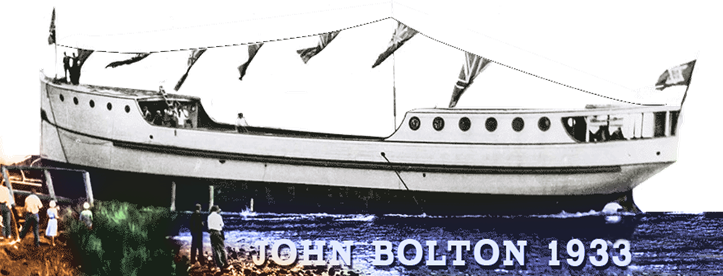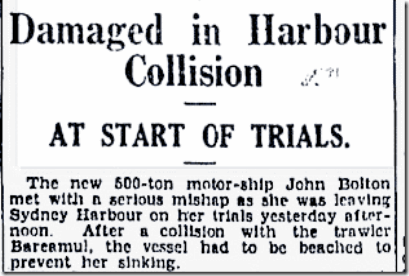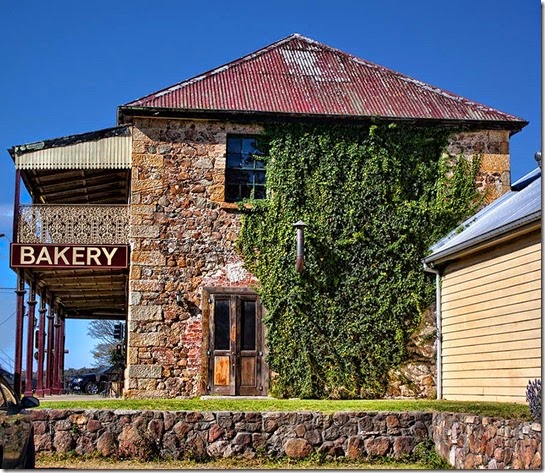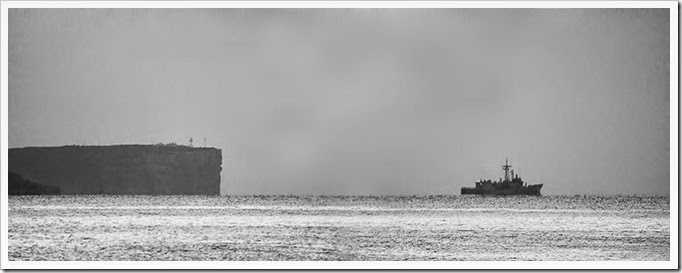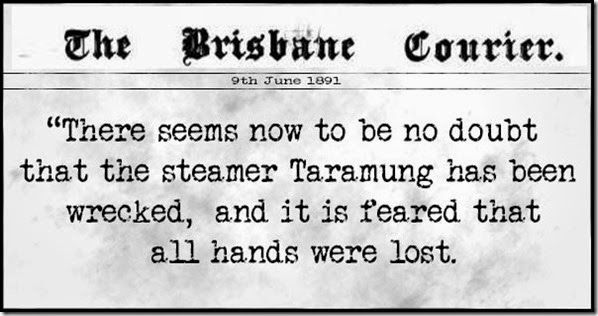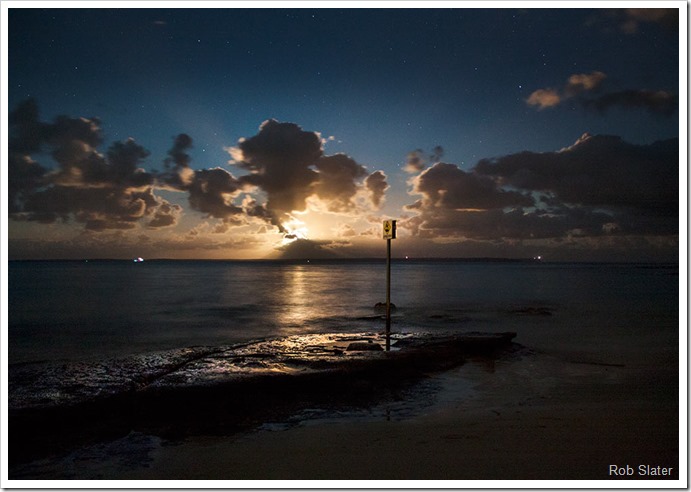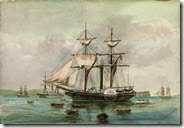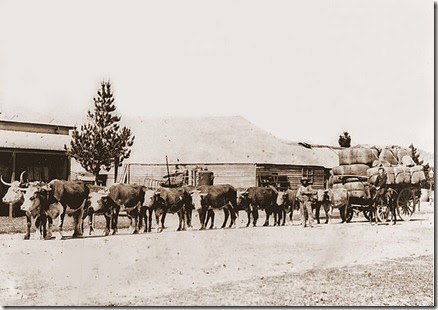30 August 2014
27 August 2014
Discovery of gold at Yalwal.
25 August 2014
1872 GOLD BEARING 18 MILES WEST OF NOWRA.
August 24th 1872 Shoalhaven News announced the discovery of gold at Yalwal west of Nowra.
More to this story soon.
20 August 2014
The “John Bolton”… Launched at Huskisson 1933
REF: http://trove.nla.gov.au/ndp/del/article/16970850http://trove.nla.gov.au/ndp/del/article/24882321 http://trove.nla.gov.au/ndp/del/article/112229554?searchTerm=john%http://trove.nla.gov.au/ndp/del/article/135554133?searchTerm=john%20bolton&searchLimits= 18th January 2016 We received this letter from Kim Flemming of London. He has added the details below to the story of the John Bolton.
On your interesting blog about this vessel you invite others to add to its story. I can contribute two or three facts.
1
In "The Register of Australian and New Zealand shipping, 1874-1949" a
vessel with this name is listed, although some of the details appear to
be wrong (there are numerous acknowledged errors in this book). It is
shown as being registered at Samarai, but then as having foundered at
Witu Island in 1949, which contradicts other more reliable accounts.
2
The MV John Bolton was certainly chartered by Sir Harry Maude's Phoenix
Islands Settlement Scheme, which began in 1938, to carry Gilbertese
people to the islands.
3
In January 1940 the vessel delivered supplies to the British
administrator (my great uncle) on Canton Island. It had come from Beru
(in the southern Gilbert islands), very probably having loaded from Suva
in Fiji in November of the previous year.
With best wishes.
Kim Fleming
London
|
17 August 2014
Historic building at Milton. 1887
14 August 2014
Jervis Bay’s noisy visitors.
| If you live within earshot of the bay you may have heard two very loud blasts from a ships horn this morning. The Australian Navy Ship Newcastle was on the bay doing “force protection maneuvers”. This is where the ship is put under attack from small speed boats and the ship implements procedures to deal with the threat, the exercise is designed to get the ships battle ready. The loud blasts echoed across the bay and the surrounding suburbs. There are at present, HMAS Stuart, Newcastle, Dimontina and Gascoyne in the bay. |
13 August 2014
Reported in the Brisbane Courier Mail 9th June 1891- the disappearance to the steam ship Taramung, and the discovery of wreckage near Jervis Bay.
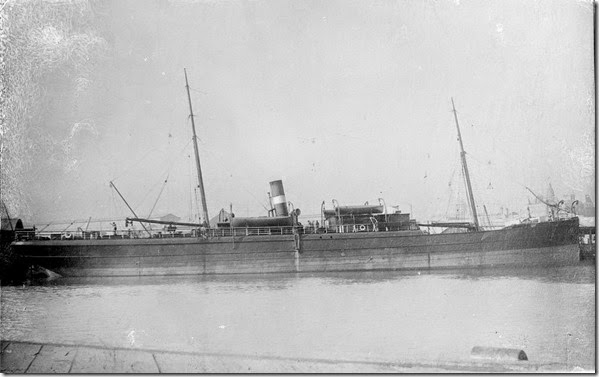 |
 Description: print : wood engraving. Description: print : wood engraving.Image consists of main sketch of steamship and an inset with portrait of its captain. Captain Page. Around 30 years of age, he was well known as a careful and capable ship master. Taramung was his first command and he had served on her for three years.  |
| At the time of her disappearance she was reported to have been “deeply laden with 1672 tons of coal”, but not over laden, and still 2inches above her water line. She was employed on her regular run between Newcastle and Melbourne and was due to arrive in Melbourne on the 2nd of June 1891. 30th May 11pm - She left port with fine weather, but shortly after a fierce S.E. gale set in, raising a tremendous sea. Other vessels much more powerful than the Taramung had as much as they could do to face the seas, and even the P.and O. mail steamer Carthage shipped seas forward for hours in a most alarming manner. June 1st - Reports recorded she was last seen by the S.S. Federal off the coast of Jervis Bay and appeared to be going along all right. She failed to pass Gabo Island and it’s feared she may have foundered in the gale battering the coast. |
| Wreckage found by Tomerong fisherman. A telegram from Melbourne says that a quantity of wreckage has been found in Wreck Bay. It was from Joachim Moss, a fisherman of Tomerong, and was addressed to the telegraphic authorities. The message stated that he had that day found on the beach at Wreck Bay a quantity of wreckage, including a vessel's wheel 4ft. in diameter, a ship's barometer newly broken, and a wrecked ship's boat with the oars marked " s.s. Taramung." |
| Conflicting report - Tamamung Safe. Another telegram was recieved stating that the Tamarang had arrived safely at Melbourne, but subsequently it was learned that the steamer Easby had been mistaken for the Taramung. |
 Unfortunate Passage. Unfortunate Passage.The number of souls on board was 23 including one unfortunate passenger Miss Moss, who had been on a visit to her sister at Newcastle. On the morning of the day the Taramung left Newcastle this young lady received news of the death of her father at Melbourne, and booked by this vessel as being the quickest means of returning. As unfortunate as Miss Moss’s story is, there is another of good fortune. Mr. Anderson, the second engineer of the Turamung, was not with her on this trip, he having remained in Melbourne to undergo one of his examinations for the qualification of chief engineer. |
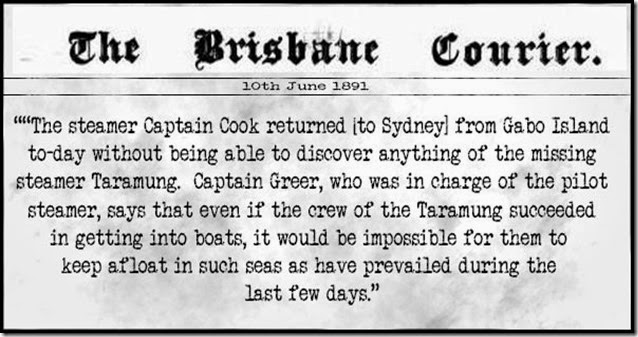 |
| Specifications. |
| REF: Link to digitised item: http://handle.slv.vic.gov.au/10381/258514 http://newspaperarchive.com/uk/middlesex/london/iron/1880/01-16/page-10 http://www.ozhistorymine.com/html/taramung_1891.html http://trove.nla.gov.au/ndp/del/article/13827433 http://trove.nla.gov.au/ndp/del/article/13827627 http://www.plimsoll.org/resources/SCCLibraries/WreckReports/16140.asp http://trove.nla.gov.au/ndp/del/article/71253999 |
Moonrise over Jervis Bay
August 12th, 8pm - The moon had an orange glow as it came up and passed behind the moving storm clouds. A magic moment over Jervis Bay.
12 August 2014
A gentleman with birds.
6 August 2014
Supermoon Sunday the 10th August
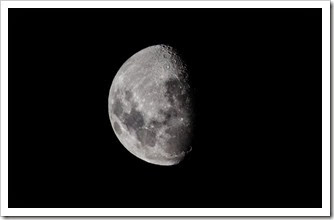 A supermoon is when the full moon makes its closest approach to Earth in its orbit. This Sunday, Aug. 10, is the full moon and it will be just 221,675 miles away, making it the closest approach to Earth in 2014.
A supermoon is when the full moon makes its closest approach to Earth in its orbit. This Sunday, Aug. 10, is the full moon and it will be just 221,675 miles away, making it the closest approach to Earth in 2014.
Id suggest everyone brave the cold and get outside on Sunday Night,,,The last Supermoon event was back in July and it was amazing to see. With a bit of luck the sky will be clear.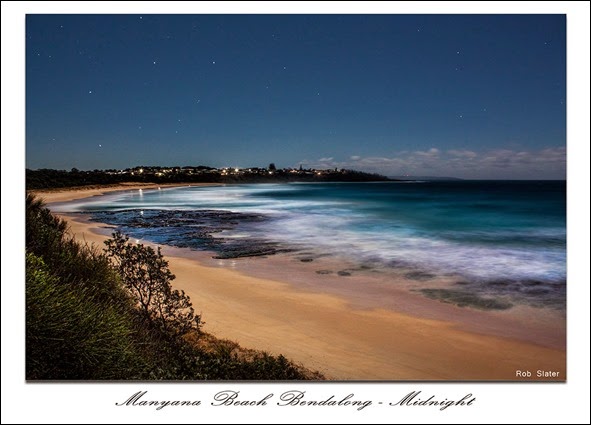
This picture taken last Supermoon event in July at midnight.
5 August 2014
Steamer for Jervis Bay – the Sophia Jane.
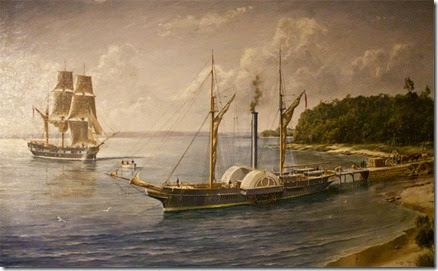 This painting depicts the Sophia Jane being loaded with hay bales on the wharf at South Huskisson (Vincentia) in 1843. This painting depicts the Sophia Jane being loaded with hay bales on the wharf at South Huskisson (Vincentia) in 1843.The other ship is the barque Cygnet. Marine painter. Ian Hansen. |
|
|
| Sophia Jane Specifications. |
| 256 ton brig rigged paddle steamer she was 126 feet long, breadth 20ft and could travel 8 miles and hour, she was an auxiliary steamer. In practice, the disadvantages combined rather than the advantages. The type had great wind-resistance, leading to an increased use of fuel up-wind compared to a pure steam ship. At the same time, the requirement to store coal reduced the cargo space over that of a sailing ship. It thus combined the slow speed, high maintenance and poor righting (ability to resist capsize and wind) of a sailing ship with the small cargo space and fuel expense of a steam ship. |
REF: http://www.jenwilletts.com/Steamers.htm
http://www.myplace.edu.au/decades_timeline/1830/decade_landing_17_1.html?tabRank=4&subTabRank=2
Top painting. P.S. SOPHIA JANE - from a painting by Dickson Gregory, image No.; 2805501, courtesy State Library of Victoria.
http://digital.slv.vic.gov.au/view/action/nmets.doDOCCHOICE=2804725.xml&dvs=1407110792209~598&locale=en_US&search_terms=&adjacency=&divType=&usePid1=true&usePid2=true
1 August 2014
On this day – Nowra Bridge opens
1st August - 1881 - The bridge over the Shoalhaven River at Nowra was opened by Hon John Lackey MLA, Minister for Works.
The bridge was originally built high to allow for navigation and to be flood free. It has never been covered by water. Its official name is the “Nowra Bridge”. It cost a total of £42,500.
Previous post about the bridge here. Continue reading more.

